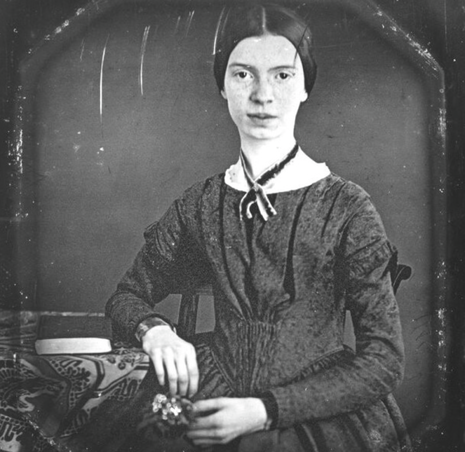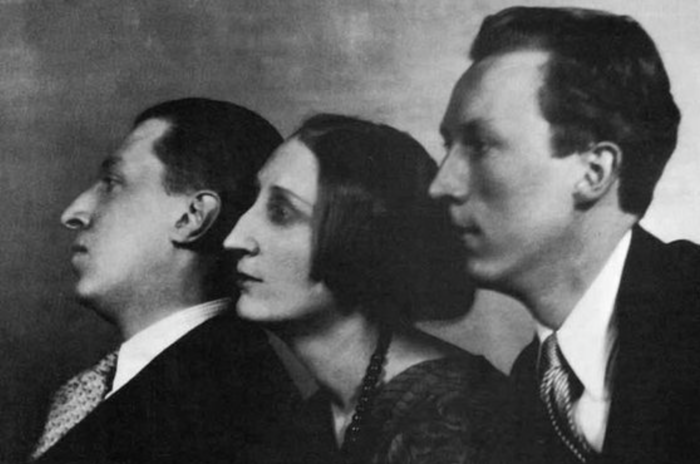When Hope is the Thing with Fangs
Kit Treadwell on his response to Emily Dickinson’s famous poem, and what it says about our ideas of mental health and hope
Content note: this article contains detailed discussion of mental health

“Hope” is the thing with feathers -
That perches in the soul -
And sings the tune without the words -
And never stops - at all -
And sweetest - in the Gale - is heard -
And sore must be the storm -
That could abash the little Bird
That kept so many warm -
I’ve heard it in the chillest land -
And on the strangest Sea -
Yet - never - in Extremity,
It asked a crumb - of me.
Emily Dickinson's meditation on hope – or perhaps notably, "hope" – has been a major touch point for me in my interactions with my own mental health. Not only does it resonate as a profoundly positive message but gains all the more potency when placed up against an image of the poet's life. I should perhaps preface any further discussion with the admission that I am an immense admirer of Dickinson's work. I first encountered her at GCSE, with Because I could not stop for Death – one of the few poems that clicked with me from our set texts. Further coverage at A level only enamoured me further with her gift for what I may only term as absolutely insane metaphors; the framing of looking through a well into eternity, a captured and enraptured love as a loaded gun, so many settings whereby she imagines her own death. Unlike so much of what I found (and continue to find) frustrating about poetry, her works are simple, relying not complicated vocabulary – sometimes – or flowery, lyrical language. She trusts her meanings to be clear. There is also something wonderful about a poet whose works are ephemera, scribbled on napkins, envelopes, and reworked constantly. Leontodon's escutcheon sustains him everywhere, reads one, leaving the reader to puzzle out exactly what she means, or indeed whether she meant anything at all.
There is then perhaps a great deal of power in the poem itself, as a call for positivity written from dark recesses.
So then, to her life: while a great deal of ink has been spilled over the precise diagnosis of the mental illness that affected her, it is clear she endured immense difficulty. She spent the majority of her life in seclusion, and a not insignificant amount of time in a single room. While it is impossible to know exactly when the above poem was produced, the surviving manuscript was compiled in 1861, after she had withdrawn from society. There is then perhaps a great deal of power in the poem itself, as a call for positivity written from dark recesses. All the more so given the poem's slightly childlike, simplistic tone – this is an uncomplicated positivity. Even Dickinson's idiosyncratic dashes cannot confuse such a simple message: hope is always present. Indeed, contrary to elsewhere in her prolific corpus of poetry, they seem to stress rather than obfuscate; - at all -, - never -, the lingering emphasis created by the caesura after crumb -. This is not a poem in the vein of her more macabre investigations of death, life, and the unglamorous journey between them.
Or is it? I hated this poem. Perhaps this is a bad thing to admit on the third paragraph of an article dedicated to, well, this poem. Nevertheless, it is true. Everything I've endured rails against the idea that hoping does not ask a crumb of someone brave enough to feel it. Twelve months of depression, ten of therapy and eight of anti-depressants stand testament in my mind to the difficulty of coping, let alone hoping for improvement. In my lowest moments, the very act of hope was so profoundly revolutionary as to make me quite angry. What evidence did I have to back up this fancy? None at all, or so it seemed to me. As much as my raging narcissism ensures that I've centred this article around my own personal pain, I think it's more broadly applicable. In the middle of a pandemic (had you noticed?) with populist fascism on the rise almost as quickly as both temperatures and sea levels, there is an awful lot of injustice to be anxious about. It would be ridiculous to insist that hope is not an emotional labour. This chimed poorly with everything I loved about Dickinson's work. From a poet who wrote about mental health in a way that was extraordinarily familiar and unflinching, such cloying positivity felt like jarring at best and a betrayal at worst.
Dickinson never shied away from cynicism where she saw it, but there is absolutely none evident here.
Yet the more I read this poem, the less convinced I am by my anger. The simplicity of it – basic rhyme scheme, simple rhythm, everyday vocabulary – reads like a nursery rhyme, or a mantra, or maybe a fairy tale. There is none of the false self-motivation that I find the most infuriating response to mental health difficulties (I firmly believe that telling anyone 'you just have to learn to love yourself' represents a horrific misunderstanding of the problem), simply because there is nothing false about the poem. It is so endearingly honest and simple that it conveys a sense of real belief. Dickinson never shied away from cynicism where she saw it, but there is absolutely none evident here. Perhaps, I thought, I should stop raging against how patronising I found the idea of just hoping for change and engage with the poem itself. The author, infinitely cleverer and more astute than me, probably did not have the same intentions as well-meaningly-inept acquaintances who stumble out clichés.
The poem rewarded this. The speaker (presumably Dickinson herself) never actually engages with the bird. She only hears it, and of course she stresses how little it asks of her. What if, instead of my knee-jerk reaction, "Hope" is never asking for action, rather than sitting as an enduring constancy? Something heard does not necessarily have an impact; like announcements on a bus ride, it can go unacknowledged. It keeps so many warm, but not everyone – and suddenly the saccharine 'things can only get better' outlook fades away to a force that may be tapped into where needed but isn't overbearing or necessary; or even bothered with. "Hope"is not hope, the quotation marks further abstracting it from anything definite. Instead, it's a subjective presence that is possible where it is wanted. It will never outstay its welcome; it will not ask a crumb of you.
If there's a point to this article – always dubious – it is perhaps that my initial anger is reflective of the way that we treat mental health. There has been such improvement in allowance that it has partially outpaced actual understanding. For sufferers such as myself (and I by no means intend to imply that my experience is universal) this can be infuriating. Everyone knows that depression is bad, but few know how or why or how it manifests itself. This is not to blame people who are only trying to help. The opposite, in fact – it is perhaps worth remembering that if I articulate the effects my mental health struggles have on me, aid can only be more effective. Of course, like the elusive "Hope", this does not need to happen. It is not required, and the onus should never be on the one who suffers to explain their suffering. Yet if we stop insisting that there's always hope, and instead embrace the idea that times are extremely difficult and hope can be hard to come by, then maybe we can discover a path back towards embracing it, or at least hearing it. Here we are - in the Gale -and on the strangest Sea-but maybe - in Extremity,its calls will come to me.
 News / Uni Scout and Guide Club affirms trans inclusion 12 December 2025
News / Uni Scout and Guide Club affirms trans inclusion 12 December 2025 News / Pembroke to convert listed office building into accom9 December 2025
News / Pembroke to convert listed office building into accom9 December 2025 Features / Searching for community in queer Cambridge10 December 2025
Features / Searching for community in queer Cambridge10 December 2025 News / Uni redundancy consultation ‘falls short of legal duties’, unions say6 December 2025
News / Uni redundancy consultation ‘falls short of legal duties’, unions say6 December 2025 News / Gov declares £31m bus investment for Cambridge8 December 2025
News / Gov declares £31m bus investment for Cambridge8 December 2025









